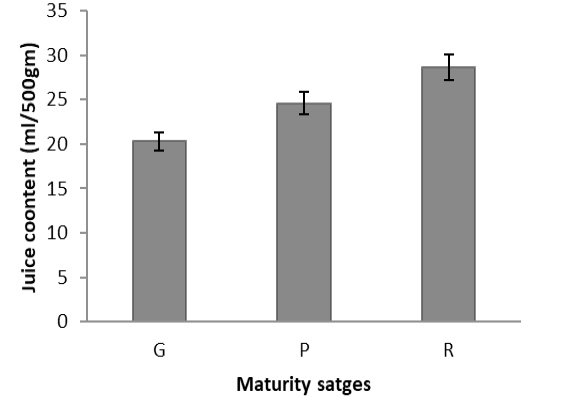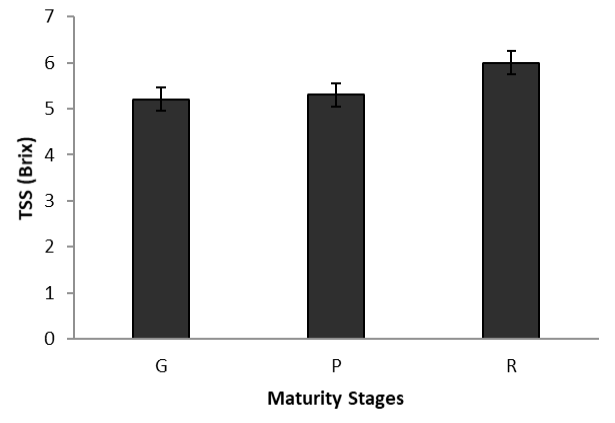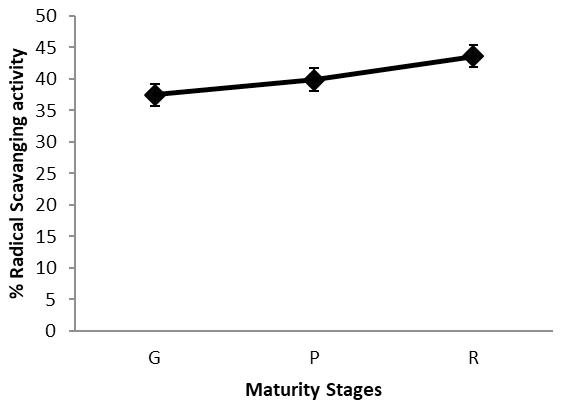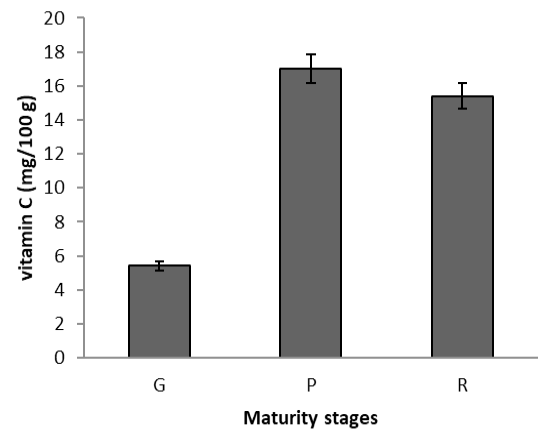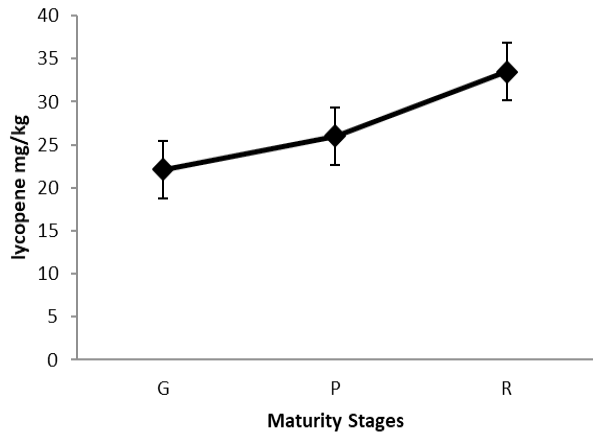Maturity Dependent Changes in Post-Harvest Physiological, Antioxidant and Anti-Microbial Attributes of Tomato
Maturity Dependent Changes in Post-Harvest Physiological, Antioxidant and Anti-Microbial Attributes of Tomato
Hafiza Mehwish Iqbal1, Qurrat Ul Ain Akbar1, Saqib Arif1, Shahid Yousaf2*, Salman Khurshid1, Saqib Jabbar2, Neelofar Hamid3 and Uzma Sitara1
Juice content of tomato fruit at different maturity stages (G: green, P: pink, R: red).
Total soluble solids of tomato fruit at different maturity stages (G: green, P: pink, R: red).
DPPH radical scavenging activity of tomato fruit at different maturity stages (G: green, Pink: P R: Red).
Vitamin C content of tomato fruit at different maturity stages (G: green, Pink: P, R: Red).
Lycopene content of tomato fruit at different maturity stages (G: green, Pink: P, R: Red).




